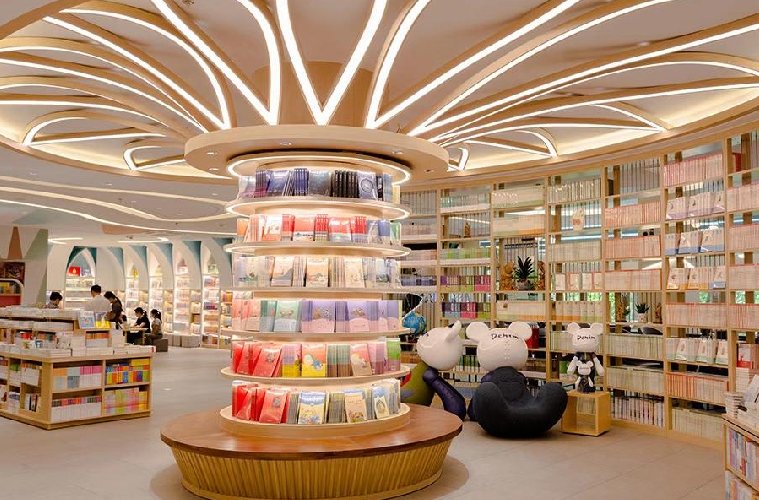As the lighting industry continues to evolve, understanding professional terminology is essential for us to make wise lighting choices. Among them, lumen and Kelvin are two core concepts that define the light we see from different dimensions.
What Are Lumens?
Lumen (lm) is the unit of luminous flux. Simply put, it measures the energy radiated by a light source to the surrounding space per unit time, which can make the human eye feel light. Figuratively speaking, if the light source is imagined as a fountain, then the lumen is like the amount of water sprayed from the fountain. The more water, the greater the luminous flux, that is, the more light the light source emits.

Lumens and Brightness
When shopping for bulbs, especially LEDs, it’s important to focus on lumens rather than wattage. In traditional incandescent bulbs, the brightness was often associated with how much energy (watts) the bulb consumed. However, LEDs are far more energy-efficient, meaning they can produce more lumens with fewer watts. For instance, an LED bulb that uses only 13 watts can produce the same amount of light as a 60-watt incandescent bulb.
Here’s a breakdown of how many lumens correspond to different lighting needs:
| Lumens | Type of Light |
| 200-300 lm | Night light, Accent |
| 400-500 lm | Reading lamp |
| 700-900 lm | Living room lighting |
| 1,000-1,500 lm | General indoor lighting |
| 2,000-3,000 lm | Very bright for large rooms |
How Lumens Affect Your Lighting Experience?
The total number of lumens you need depends on the size of the room and the type of activity. For example, a living room may need between 1,500-2,000 lumens to be sufficiently bright, while a workspace or kitchen may need 2,000-3,000 lumens for optimal illumination. Additionally, lighting needs vary based on personal preferences—some people prefer brighter rooms, while others opt for softer lighting.
What Is Kelvin?
Kelvin (K) is a unit of measurement that defines the color temperature of a light source. While lumens measure brightness, Kelvin measures the color of the light, ranging from warm yellowish hues to cool blue or white light. The Kelvin scale determines how warm or cool the light will appear when emitted from the bulb.
Color Temperature and Light Quality
The color temperature of light can influence the mood of a space and impact visibility. Generally, the higher the Kelvin value, the cooler and bluer the light. On the other hand, lower Kelvin values produce warmer, more yellow or orange light.
Here’s a basic guide to understanding Kelvin ratings:
- 2,000K – 3,000K: Warm White – Produces a soft, yellowish glow. This color temperature is great for bedrooms, living rooms, and dining rooms. It’s perfect for creating a cozy, comfortable ambiance.
- 3,100K – 4,500K: Cool White – A neutral white light that works well in kitchens, bathrooms, and workspaces. It is brighter and cleaner, providing good visibility without being too harsh.
- 4,600K – 6,500K: Daylight – Emits a bright, bluish light similar to natural daylight. This color temperature is perfect for offices, garages, factories, and display areas, where bright and clear lighting is needed.
Why Kelvin Is Important for Lighting?
The Kelvin value of a bulb can significantly impact the ambiance and functionality of a space. For example, cool white light (around 4,000K) is excellent for task lighting in kitchens or offices where clarity is essential. On the other hand, warm white light (around 2,700K) is more suitable for a bedroom where relaxation is key.
Choosing the right Kelvin temperature also depends on how you want a space to feel. Higher Kelvin values, especially those above 5,000K, can give the impression of a cooler, more modern environment, while lower Kelvin values bring warmth and comfort to a room.
Key Difference Between Kelvin vs Lumens
| Aspect | Kelvin (K) | Lumens (lm) |
| Definition | Measures the color temperature of light. | Measures the brightness of light. |
| What It Measures | The warmth or coolness of light. | The amount of visible light emitted. |
| Impact on Lighting | Affects the color or appearance of the light. | Affects the brightness of the light. |
| Scale | Ranges from warm (2,000K) to cool (6,500K+). | The higher the lumens, the brighter the light. |
| Common Uses | Choosing the mood or ambiance of a space (e.g., warm for relaxation, cool for task lighting). | Determining the sufficiency of light for various tasks (e.g., reading, general illumination). |
| Example Range | 2,700K for warm white to 5,000K+ for daylight. | 200 lm for night lights to 3,000+ lm for bright room lighting. |
| Impact on Room | Affects how warm or cool a room feels. | Affects how bright or dim a room appears. |
| Bulb Types | Incandescent bulbs are usually warm, while LED and fluorescent can vary from cool to daylight. | LED and incandescent bulbs can vary in brightness, measured in lumens. |
The Relationship Between Lumens and Kelvin
Though lumens and Kelvin are often discussed together, it’s important to note that they measure different characteristics of light. Lumens measure brightness, while Kelvin measures color temperature. Here’s a simple way to understand the difference:
- Lumens: How much light is emitted from the bulb. The higher the lumen count, the brighter the light.
- Kelvin: The hue or warmth of the light emitted. A higher Kelvin number means a cooler, whiter light, while a lower Kelvin number means a warmer, yellowish light.
How to Choose the Right Bulb Based on Lumens and Kelvin?
Step 1: Determine the Desired Brightness (Lumens)
Start by considering how bright you want the bulb to be. Are you lighting a small area like a reading nook, or are you illuminating a large living room or office space? Use the following guide to help you decide how many lumens you need:
- Reading light: 300-500 lumens
- Accent lighting: 200-300 lumens
- Living room: 1,500-3,000 lumens
- Office lighting: 2,000-4,000 lumens
Step 2: Choose the Desired Ambiance (Kelvin)
Next, think about the mood you want to set for the space:
- Warm lighting (2,000K – 3,000K) is ideal for relaxing or creating a cozy atmosphere.
- Neutral white (3,100K – 4,500K) works well in spaces where you need a clean, bright light, such as kitchens and bathrooms.
- Cool daylight (4,600K – 6,500K) is best for work environments, garages, or areas where you need maximum clarity.
Step 3: Check the Energy Efficiency (Wattage)
While lumens and Kelvin give you the necessary details about brightness and color, remember that energy-efficient lighting can save you money in the long run. Look for bulbs with high lumens but low wattage, especially when considering LED or CFL bulbs.
Practical Examples
Home Lighting
- Living Room: For general illumination in a living room, a warm white (2,700K) LED bulb with 1,500-3,000 lumens will provide a comfortable, cozy atmosphere.
- Kitchen: In kitchens, a cool white light (around 4,000K) with 2,000-3,000 lumens is ideal for task lighting, ensuring a bright and clear view while cooking.
- Bedroom: A warm white light (around 2,700K) with 1,000-1,500 lumens is perfect for creating a relaxing and calming ambiance in the bedroom.
Automotive Lighting
When shopping for car bulbs, understanding Kelvin and Lumens is just as important as understanding wattage.
- Halogen Headlights: Typically produce about 3,000 lumens and have a 3,200K – 4,600K color temperature. These provide decent visibility but are usually warmer in appearance.
- Xenon HID Bulbs: These can generate 5,000 lumens or more, with color temperatures ranging from 4,500K to 6,500K, offering much brighter, clearer light, especially in cooler temperatures.
- LED Car Bulbs: Available in a wide range of lumens and Kelvin temperatures, they are energy-efficient, offering 4,000 to 6,000 lumens with a variety of color temperatures for both street-legal and aesthetic purposes.
Conclusion
Choosing the right lighting can enhance the functionality and ambiance of any space.
Understanding the relationship between lumens and Kelvin helps you select the perfect bulb for your needs—whether it’s for your home, office, or vehicle. By paying attention to lumens for brightness and Kelvin for color temperature
Share your lighting needs or experiences in the comments—we’d love to help you find the perfect solution!





